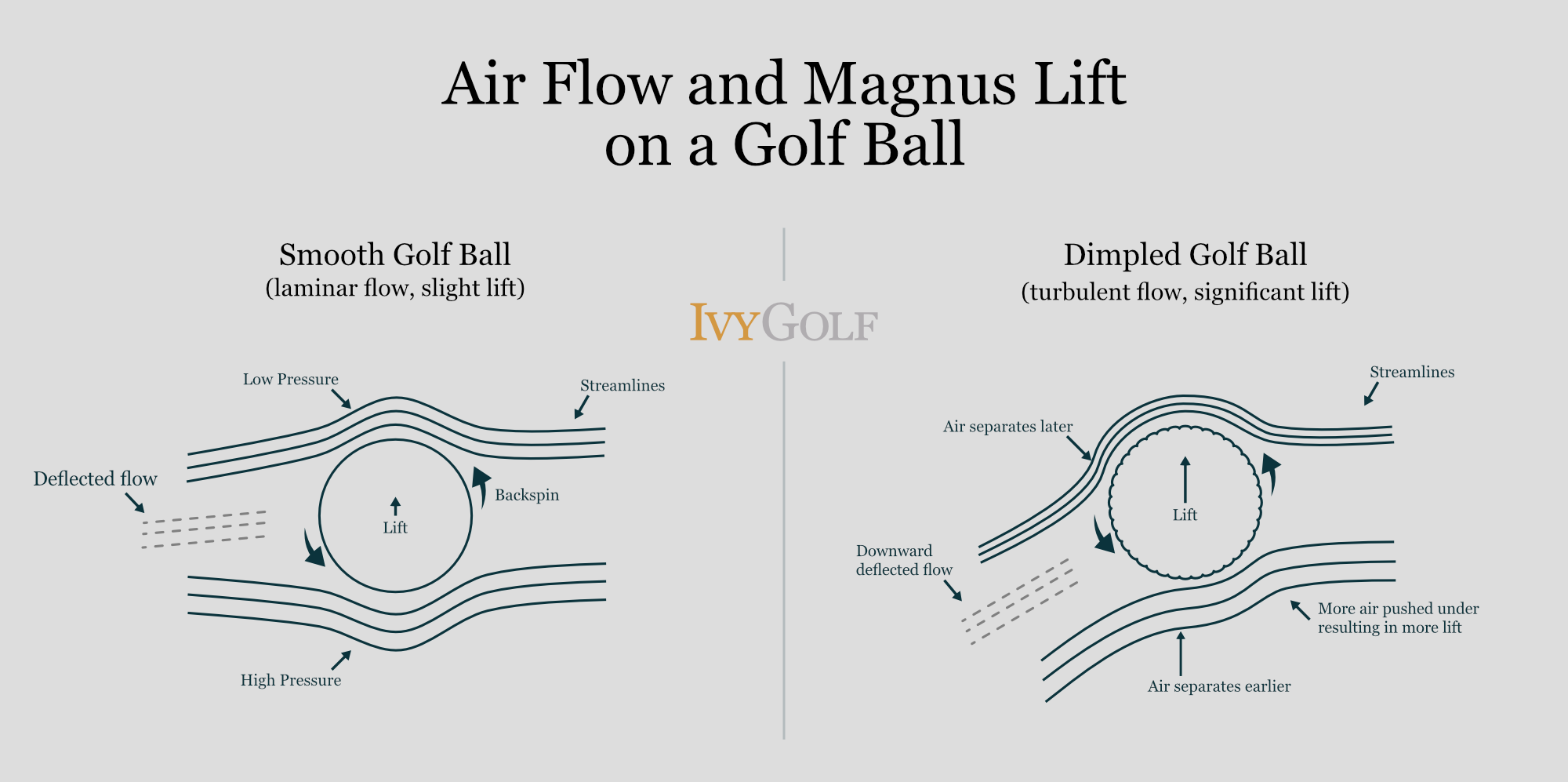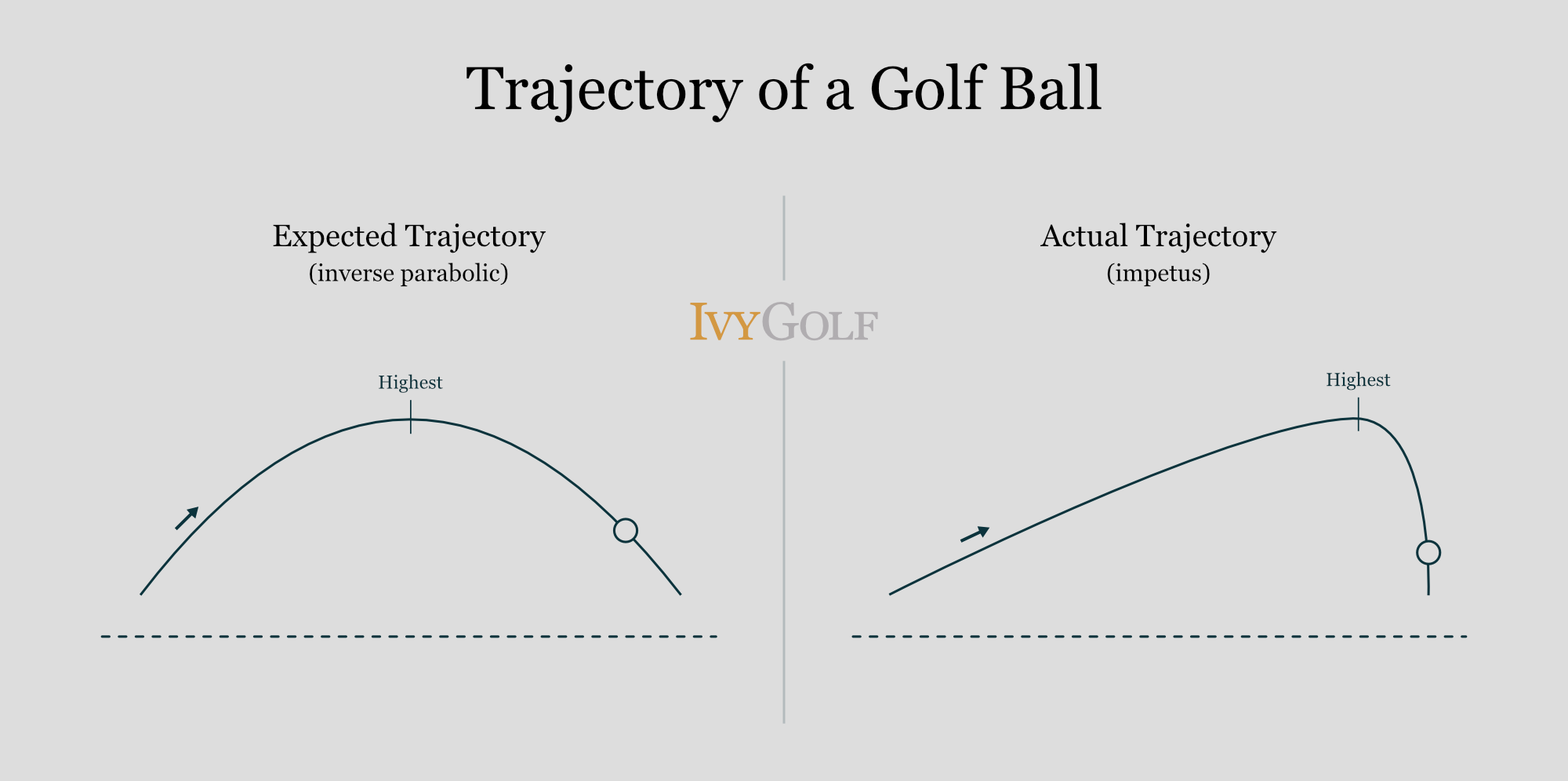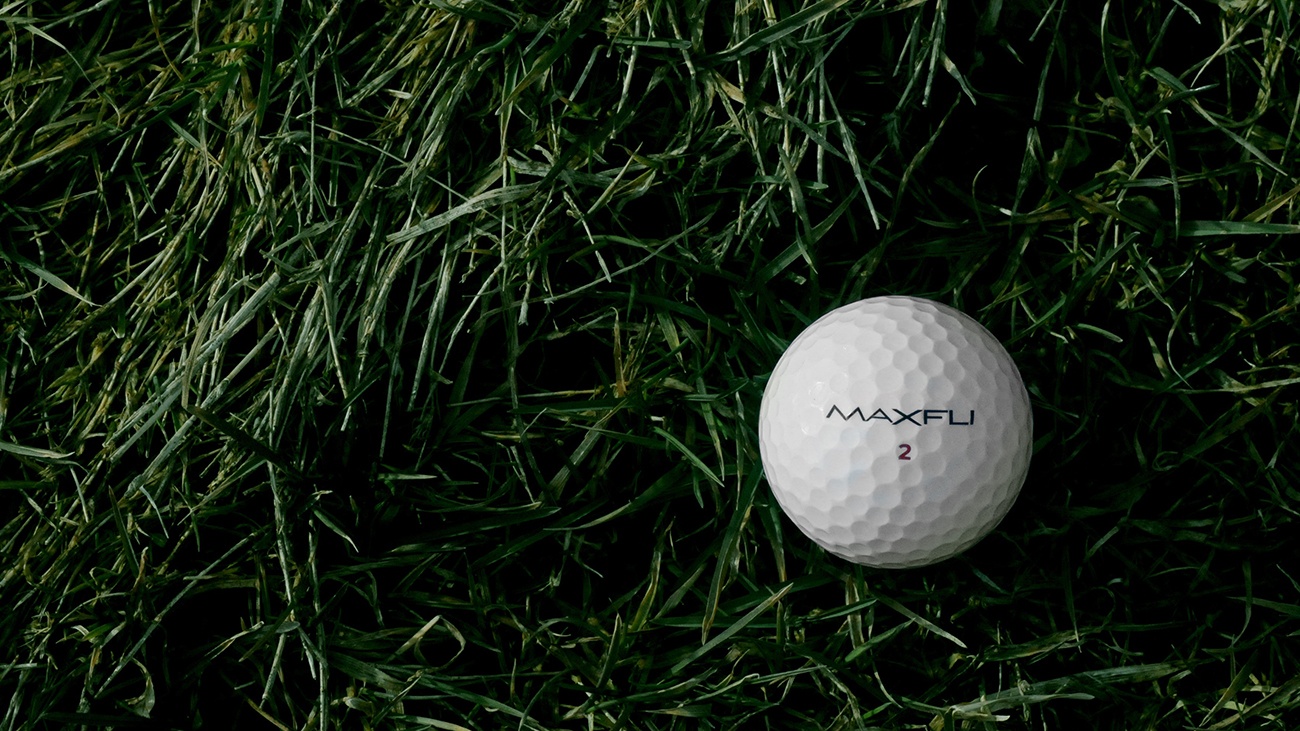Contrary to common belief, golf ball dimples increase drag. Yep, you read that correctly; the age-old explanation of dimples reducing drag behind the ball falls more than a little shy of the mark.
Make no mistake about it, though; the evolution of the golf ball has had one of the biggest influences on the way you play golf today. The introduction of the dimpled golf ball changed the game entirely. Capable of traveling almost twice the distance of a smooth ball, it’s no wonder dimpled golf balls are ubiquitous in the modern game.
Let’s take a look at the real reason why these subtle dimples make all the difference.
Why Golf Balls Have Dimples
Golf balls have dimples because the turbulent flow of air they create increases Magnus lift, a lifting force which affects rotating objects while traveling through the air. It’s the same force that makes a soccer ball swerve when sliced, or a tennis ball dip during a chip shot.
How Is Magnus Lift Created On A Golf Ball?
When you drive a golf ball, dimpled or otherwise; it has backspin. This backspin results in the top of the golf ball moving slower relative to the air around it since they’re both traveling in the same direction. As such, there is less drag on the air that goes over the ball, creating an area of low pressure above it. Air passing over this area stays hugged tight to the ball longer, following the curve of the ball and separating later.
The opposite is happening on the underside of the ball. The ball is spinning into the oncoming air, meaning it’s moving faster relative to the air around it resulting in more drag on the air flowing underneath the ball and an area of high pressure below the ball. Air passing over this area separates from the curve of the ball much earlier than the air flowing above the ball.
The combination of these different pressure zones and resulting drag means that more air is being pushed under the ball than above it; pushing the ball up. The ball is using drag to its advantage.
Click to expand:

Driving both smooth and dimpled balls produces this effect to some degree, but dimpled golf balls create turbulent air much faster than their smoother counterparts. This turbulent flow of air created by the dimples amplifies the effects described above; meaning a dimpled ball experiences far more lift than a smooth one.
Without the dimples, the ball would travel in a much more parabolic trajectory. It would rise to its maximum height sooner and come back down to the green.
With the dimples, the lift allows the golf ball to continue rising until the amount of turbulent air flow below the ball reaches a point that flips the Magnus lift to a negative force; bringing the ball down suddenly and resulting in the “dropping out of the air” effect we’re now so accustomed to seeing. It is known as an impetus trajectory.
Click to expand:

Depending on conditions, this effect can be demonstrated clearly in the moments immediately after driving a golf ball, where you can see the trajectory of the ball curve upwards due to the lift generated.
How Golf Ball Dimples Came To Be
Now we know why they’re better, it’s all the more remarkable that they were discovered by chance.
Over a hundred years ago, golfers noticed that old battered golf balls traveled further than newer ones. Not long after, golfers began intentionally “pitting” their golf balls to gain a competitive edge, adding the very first versions of today’s dimples.
However, until the 1900s, it was widely believed that the protrusions were the reason behind the improved range and stability. Manufacturers created golf balls with raised bumps and patterned ridges. It took an anonymous inventor to discover that it was, in fact, the dimples and crevices that deserved all the credit.
By as early as 1905, dimpled golf balls were being mass manufactured, and have been ever since.
